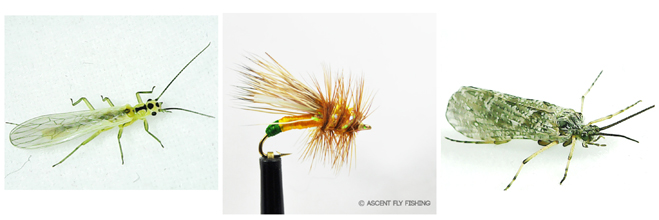
Crossover Fly Patterns: The Most Versatile Fly Pattern in Your Box
Excuse me! Hold on just a second. I couldn't help but notice you coming out of that fly shop with that plastic dish stuffed with flies, and that nice big glass of Kool-Aid. From the look of the red stains on the front of your Simms shirt and the glassy look in your eyes, it looks like this might not have been your first cup today, but hey, we have all been known to indulge in a little fly shop Kool-Aid on our way to the river. The reason I stopped you was that I noticed there was a fly floating in your Kool-Aid. I'm surprised that you didn't notice it, because from the other side of the parking lot it looked like a Himalayan Condor preparing to take flight! (Awkward pause) Look, the price tag is still on it. (Appreciative whistle) You have got to be careful when listening to the hype around the newest and hottest flies! If you drink the fly shop Kool-Aid, you are bound to get gouged and left feeling like a fish!
It's an uncomfortable feeling walking out of a fly shop light in the wallet, a dish full of nameless flies in hand, and with more questions bumping around our heads than when we first entered. We have all been there! Much of the frustration and confusion in fly fishing stems from the overwhelming number of fly patterns and the misconception that one needs to buy the latest and greatest fly pattern to be successful on the water. The result of buying into this mentality and hype is a fly vest stuffed to overflowing with boxes crammed full of anonymous flies and your spouse giving you ultimatums to decide between them or your flies.
Let’s all pause for a second and reflect on the words of philosopher and fly fishing pioneer Confucius when he said, "Life is really simple, but we insist on making it complicated." This truth should resound with the fly fisher! In spite of the Einstein-like intellect we grant trout to explain why they aren't eating our flies, the truth is, their rejection is more often due to poor presentation than our lack of the hot new fly pattern. Therefore, in our quest to simplify and slim our fly selections back to the basics, I would propose that you equip yourself with a category of flies we will call Crossover Patterns.
In the past I've written about Generalist Patterns, which are a group of flies that - when fished in several sizes or colors - can be effectively used to match a number of invertebrate species within a certain family. A prime example of this would be the Parachute Adams dry fly: when fished in sizes 12-22, it can be used to effectively match almost every mayfly hatch in Western US Crossover Patterns take this a step further in that they not only can match multiple species within a given family, but also can be used to match additional families of invertebrate (ie. Caddis and Stoneflies, or Mayflies and Midges). Many of your favorite fly patterns, those that have produced fish trip after trip to the river, likely fall under the umbrella of the Crossover Patterns, and are so effective because they in fact match multiple families of bugs on the water. Here are a few of our favorite Crossover Patterns.
Small Parachute Patterns
Parachute patterns such as the Parachute Adams, Parachute BWO, or Parachute PMD in sizes 18-24 are equally effective at matching small mayflies as they are at matching midges. Close in size and close in color will usually win the day and catch the fish!
The Mini Hot
With its wing held flat across its back and its brightly colored abdomen, the Mini Hot can effectively be used to match a number of stonefly and caddis hatches throughout the spring and summer.
The Pheasant Tail
There are few fly patterns in the angler's arsenal as versatile as the Pheasant Tail. When fished in sizes 10-22, the fly fisher can match almost every mayfly and stonefly nymph in our rivers and lakes, as well as a number of beetle, damsel, and dragonfly nymphs to boot!
So the next time you visit the fly shop, prepare to go back to the basics. Leave the Kool-Aid on the counter, and pick up your tried and true crossover patterns. I promise you that your wallet will thank you and the trout will rise to greet your flies!







